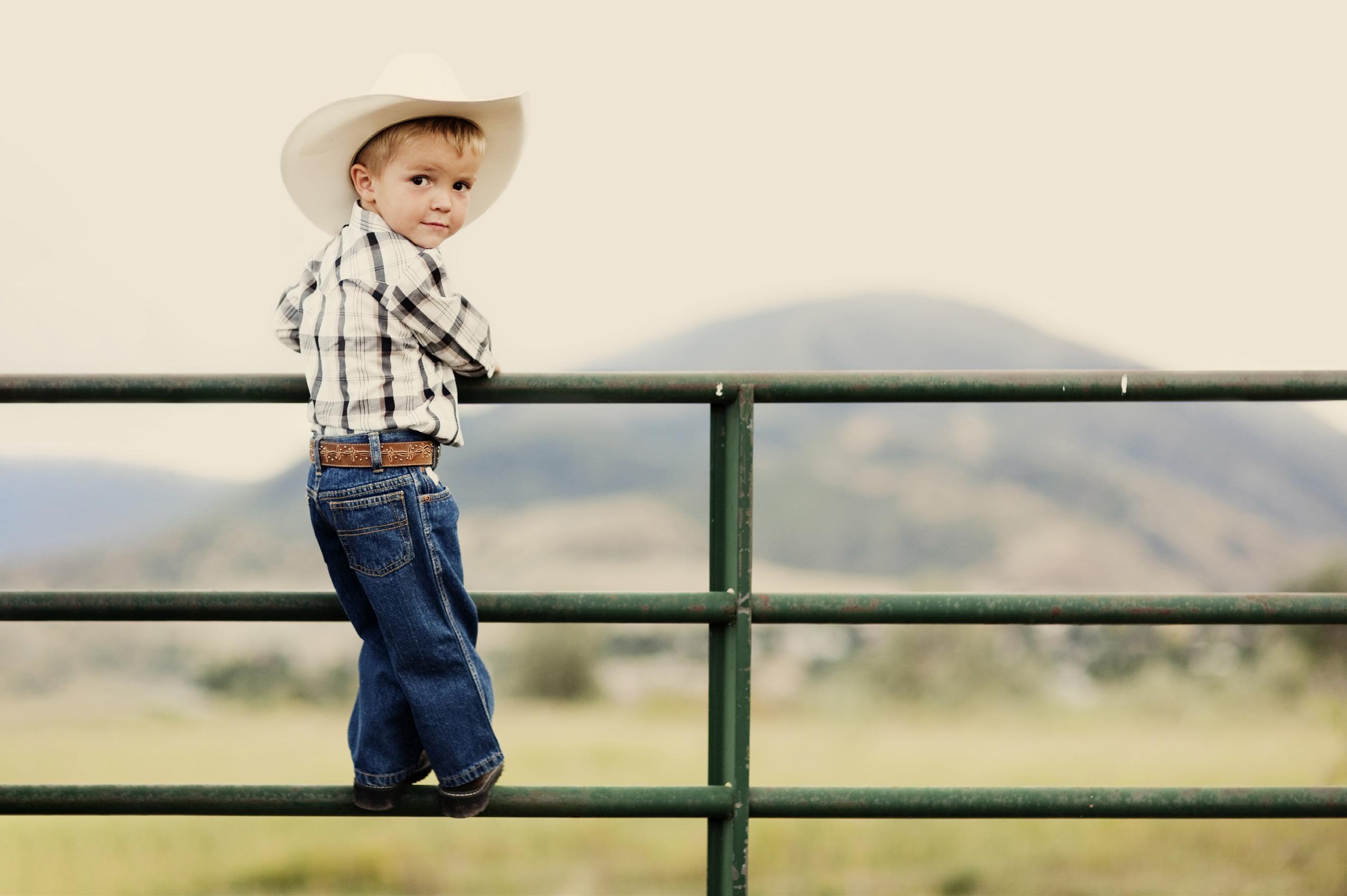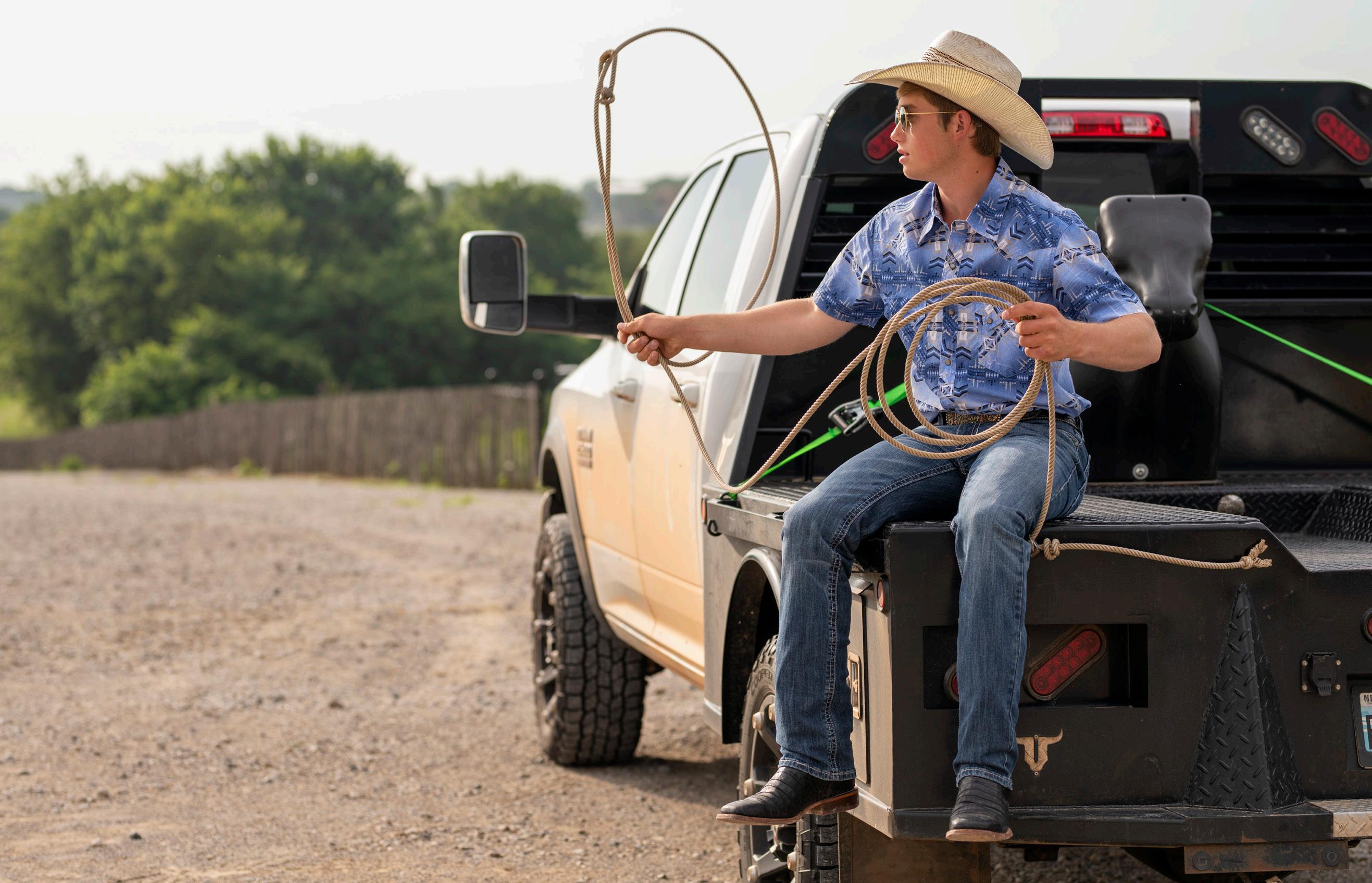GROWING OUR FUTURE
A TEXAS AGRICULTURAL SCIENCE EDUCATION MAGAZINE










Service takes on various forms within agricultural education.
Just as we have a supervised agricultural experience that fits every student's interest, the same can be said for service opportunities.
As students live out the "living to serve" aspect of our motto, we are able to see one of the key aspects behind the purpose of our organization and programs in action.
This issue is service-focused; within that, you will find content highlighting the various ways we can and do incorporate service opportunities into our programs.
We hope you enjoy the Winter 2022 issue of Growing Our Future!
iCEV and National FFA have partnered to produce the new Blue & Gold Experience lesson series. Launching 2022, the new series will replace the Blue & Gold Basics, one of iCEV’s most popular video playlists. The content for the series will showcase diverse experiences from FFA members across the nation. Through engaging video presentations and interactive learning opportunities, students will learn about the organization’s opportunities and how they can seek involvement at the chapter, state and national levels within their own fields of interest.
In this series, the Blue & Gold Experience lesson will present the various opportunities available within the National FFA Organization, including:
We are happy to be collaborating with iCEV for the new Blue and Gold Experience series... Working with iCEV to showcase the rich history of FFA, along with advisors and members from across the country was an easy choice and we are certain that many stakeholders will benefit from the project.”

National FFA Associate Director of Educational Programs

Public Service, Civil Service, Military Service, Internal Revenue Service, Stud Service, Service Info Systems, Service Flow, Roadside Service
The word service is all around us, but what does it mean?
Usually, it means an exchange—one gives something and gets something in return.
An organization employs you, and you receive pay, pension, and healthcare— but there are countless other examples. You provide labor, talent, and experience in exchange for compensation.
Today, however, I want to address another form of service. One without a quid pro quo or, "I give with the expectation of receiving something in return."
As I focused on this article on service, I began thinking about all the people who have served me.
My mother was the most selfless person I have ever met. We were poor, but
she ensured we never went without shelter, food, and clean clothes. She taught me to have a tireless work ethic because she worked a full-time job and nurtured six children. She was a true servant. She told me when I was nine years old that I would be in the FFA someday.
When I began school, I had teachers that served diligently. They gave me the confidence to learn, excel, and not be afraid to get involved.
As a young man in the FFA, I had the best ag teachers in the world. They believed a young boy from the country could be State FFA President and become a successful business leader. They taught me, bought me the right clothes, escorted me to numerous contests and camps, and cared about me. Without their service and belief in me, I would not be where I am today.
“REMEMBER, THE BEST SERVICE IS TO SERVE FOR THE OUTCOME, NOT THE INCOME.”
Throughout college, I served others through the student senate and as the dorm's Resident Advisor (RA). After graduating, I immediately began giving back to the FFA, actively sponsoring and mentoring FFA youth. Many of those young men and women are still my good friends today.
In 1988 when I became President of Ag Workers Insurance, my first official function as president was to start an intern program—not to be measured or scored but to give young people a chance to learn about business and the love of agriculture just as I had. The interns at Ag Workers have gone on to be mayors, business owners, athletes, coaches, teachers, salespeople, and lawyers, among other things.
Now, at seventy-five years old, I still strive to serve others and give young people the same chance I was all those years ago. I continue to give to youth organizations, serve on boards, volunteer my time, and have built a company that gives back to the agricultural community.
Remember, the best service is to serve for the outcome, not the income.


I challenge each of you reading this never to forget those who have served you and to pledge to give back. Give back to your families, your teachers, and the organizations that helped you to succeed. Look for opportunities to give back to the next generation. I am proof that acts of service can change a child's life.
Just think back to where you would be if you had not had someone to serve you, then get out there and serve!
“JUST THINK BACK TO WHERE YOU WOULD BE IF YOU HAD NOT HAD SOMEONE TO SERVE YOU, THEN GET OUT THERE AND SERVE!”
Living to serve. To many of us, this is our favorite line of the FFA Motto. After all, teachers have the biggest hearts to serve, which is the root of why we all do what we do. Even with the desire and heart to serve, sometimes, finding those opportunities for our students can be challenging. We know when the list to do is pages long, the calendar gets full of stock shows and other FFA events, and fitting in one more thing seems impossible. What if there are ways to make service projects applicable to your community, new or same, and easy on your schedule?
If you spend time and resources on a service project, you want to ensure that it serves your community. So often, we come up with ideas that are per-
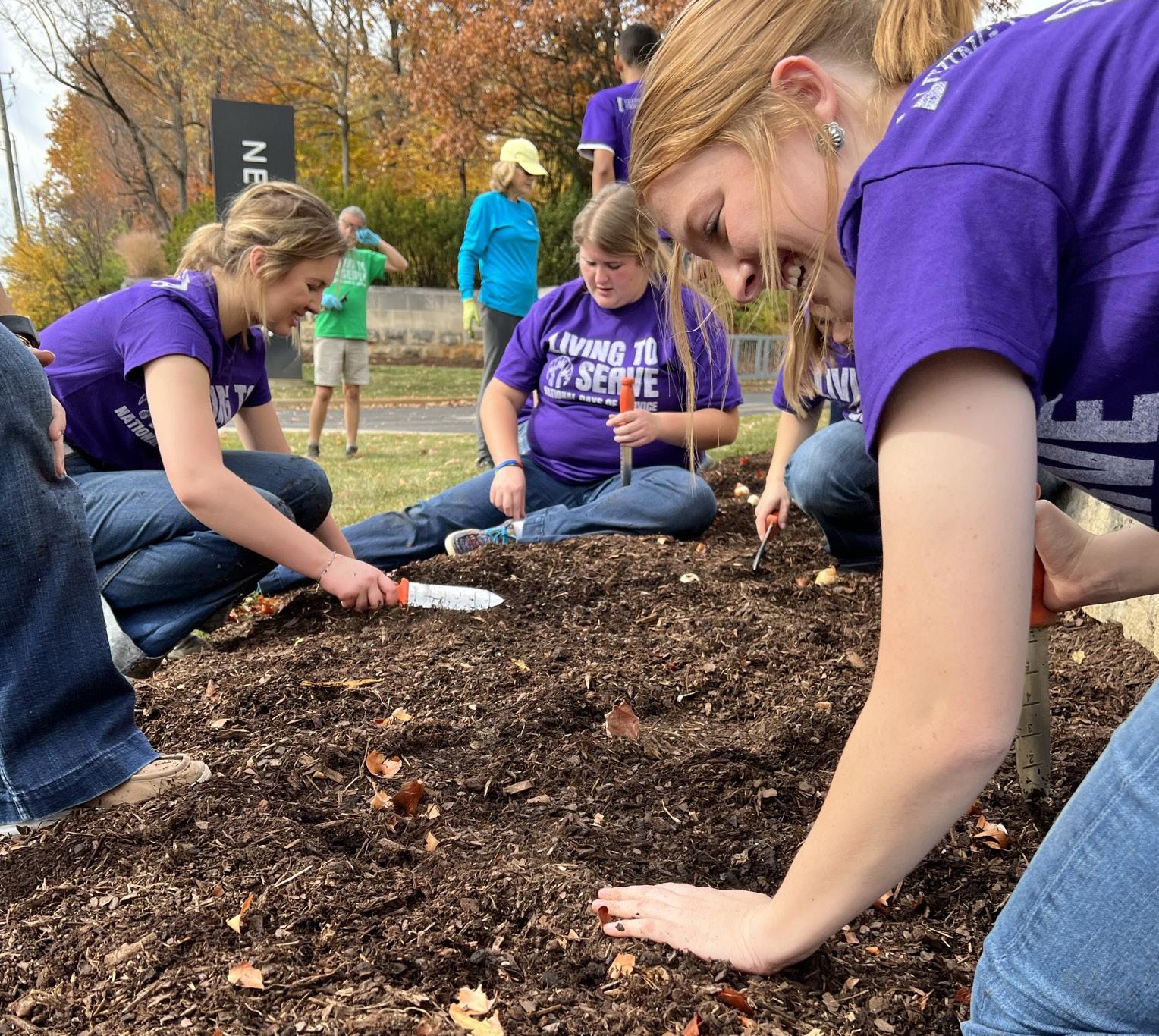
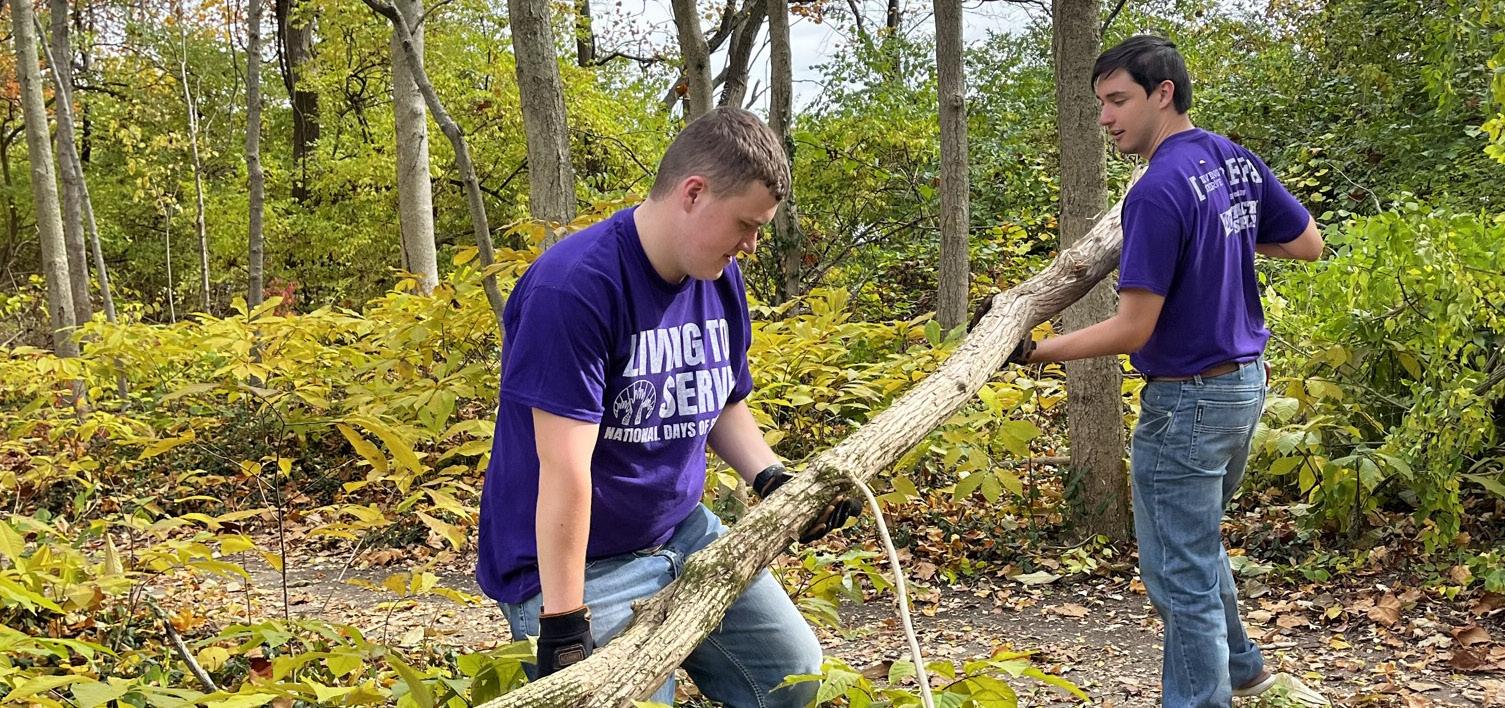
fect on paper but are not necessarily needed in the community where we are at. This especially happens when you may be new in the community, we utilize ideas we grew up doing or are excited to try. Still, it does not necessarily fit the needs of the community we are currently working in.
For example, you may want to do some food collections, but your school and community have already partnered with a service that provides such a need. Your time and resources can be utilized elsewhere to make a greater impact. Idea dump with your students; find where their heart is in serving. You will be surprised at the unique projects they come up with and who knows the community better than our students. Meet with your school counselors, community partners, church leaders, or other teachers to help gauge your area's needs. After assessing the needs of your community, you will be more likely to increase your impact. This will also help your program engage in the community and cou-
ld open doors for future unique project opportunities.
Time. Time is always a huge factor in planning any project, and we know that the program of activities gets full fast. So how do you fit in service opportunities around a busy schedule and guarantee participation? One way is to stack service projects or activities on top of already scheduled events. For example, a portion of an already scheduled FFA meeting to complete a service project is one way to secure an impact. Another way is to partner with your classes. There are many things we can do to help teach our students, not only the curriculum but the importance of service.
With budgets becoming more restricted, we can have all the ideas in the world, but if we can finance them, they may be possible. Some cost-effective ways to make service projects achievable are asking for supply donations, getting a sponsor, partnering with businesses within the community, or challenging other organizations to help grow your impact (for example, a club contest with a donation drive).
I guarantee there are many unfound and unfilled needs within your community that you and your students can fill. Sit with your students, and set some service goals. It may look like a monthly challenge, activities attached to meetings, or one large event to target your chapter's goal. Regardless of how big or small your service project is, the lessons your students are receiving, about the importance of services, is the biggest impact of all.
From the Ag Teacher’s Creed: “I realize that I am part of the school system. I will work in harmony with school authorities and other teachers at the school.”
McClure states that at times we all think our program as separate from the rest of the school. We are part of the much larger system. However, we are integral to the success of the school district. Strive to be a leader in the overall school community by volunteering to serve on committees and volunteering to do other things tied to school success.
“I GUARANTEE THERE ARE MANY UNFOUND AND UNFILLED NEEDS WITHIN YOUR COMMUNITY THAT YOU AND YOUR STUDENTS CAN FILL. SIT WITH YOUR STUDENTS, AND SET SOME SERVICE GOALS.”AN EXCERPT FROM A PAST AGRICULTURE TEACHERS ASSOCIATION OF TEXAS NEWSLETTER BY: KYLE HAMPEL NATIONAL FFA NEWS ROOM
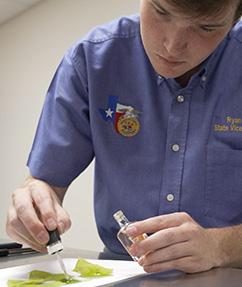
Many people in the agriculture industry got their start by doing the same job their parents did; but some folks, like Ryan Hess from Stephenville FFA in Texas, forged a different path in ag.
“I always came from an agricultural background,” Hess said. “It was more traditional, however, with the beef industry and raising a farm with my family. But once I got into high school, I wanted to broaden my experiences.”
As he explored FFA’s less traditional opportunities, Hess found himself studying plant systems for an agriscience fair project over the summer. Stephenville FFA gave him access to an “excellent” greenhouse, he said, and he liked it so much he turned it into a supervised agricultural experience (SAE).
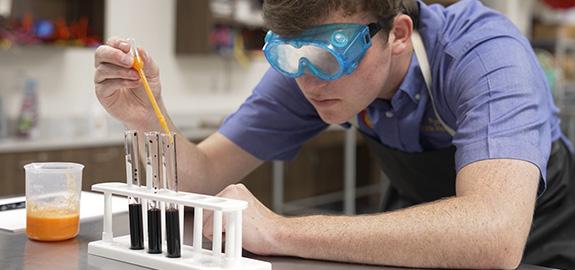
“I just fell in love,” he said. “That’s [why] I chose to complete three more agriscience fairs throughout the rest of my high school career.”
Before graduation, Hess also completed science fair projects on food storage, public opinion surveys and horse
health. He said three of his four projects made him a national champion in science fair competitions.
Now that he’s out of high school, Hess is majoring in agriculture communications at Texas Tech University. He said his prior work in surveys and social science inspired him to learn more about statistics and public relations.
“I’m currently wanting to find ways to communicate agriculture to the public,” Hess said. “It’s one thing to research those agriscience topics, but if us agriculturists can’t communicate that to the public, then there is that disconnect with the unity of everyone in our society.”
In terms of future plans, Hess said he’s keeping his options open for now. However, he said he’d like to keep giving back to the agriculture industry in some way, and he thanked all his Stephenville FFA advisors for helping him discover his passion.
Hess’ best advice for FFA members starting their own SAE is to never give up and always do more.
“That’s a little bit cliché, [but] I’m really grateful that I decided to take it a step further in my research,” he said. “The sense of gratification and fulfillment that completing a project gives you is very beneficial and it’s almost incomparable to the other experiences that I had in FFA.”
FROM THE AGRICULTURE TEACHERS ASSOCIATION OF TEXAS
TO ALL OF OUR MEMBERS AND THEIR FAMILIES






ACorsicana FFA member turned her previous struggle with market poultry into a successful Supervised Agricultural Experience (SAE) project in the Agriscience Fair.

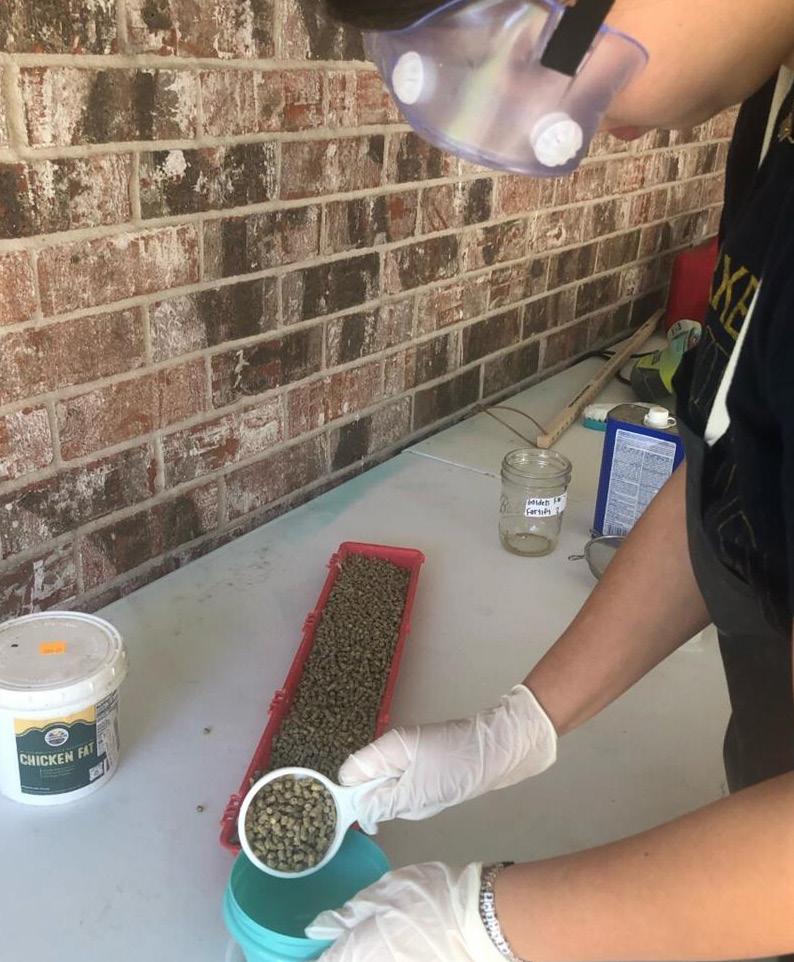
Sarah Beck has shown market poultry since she was in third grade. At several points throughout her livestock show career, judges mentioned her poultry had soft breast meat, a sign of too much fat during the finishing phase. This hurdle led the Texas FFA member to begin researching solutions to the issue. However, she found it was difficult to find relevant information on the topic.
“This brought about my current agriscience fair project where I planned and conducted an experiment to measure the fat percentages in various feed mixtures with added fat used during the finishing phase of market broiler production,” Beck said.

To conduct the experiment, Beck mixed various fat sources with poultry finishing feed and administered it to her broilers. She would take the
same mixture and record its weight.
“My goal was to analyze and apply information from a feed label, and I determined that the finishing pellets I use contain six percent fat and are fed with an unlimited supply to the broilers,” Beck said.
Beck said her research has not only been beneficial to her market poultry projects, but also the agriculture industry. Prior to her agriscience fair project, it was difficult to find information on over finishing of breast meat.
Beck’s successful SAE project was recognized at the 2022 Texas FFA State Convention as a Star Greenhand in Agriscience.
This year’s Career Week may have come and come, but you can still utilize the quality resources that showcase the extensive career opportunities within the ag industry.

To create a comprehensive weeklong plan that can be easily implemented into the classroom.

To showcase a variety of agriculture careers to students.
To assist students in identifying their talents and interests to develop an intentional plan of success throughout FFA involvement.
To assist students in developing valuable soft skills that will assist them in preparing for future career preparation and or opportunities.
Day One Day Two Day Three Day Four Day Five Day Six Day Seven Day Eight Day Nine Day Ten Day Eleven Day Twelve Day Thirteen Day Fourteen Day Fifteen
Intro to Ag Careers / Virtual Guest Speakers
Virtual Guest Speakers / Explore Career Opportunity Resources
Career Finder Quiz
Career Exploration Project (SAE FOR ALL Independent Learning Guide)
Career Exploration Project (SAE FOR ALL Independent Learning Guide)
Career Exploration Project (SAE FOR ALL Independent Learning Guide)
Writing Cover Letters Building Resumes
Professionalism / Mock Interviews
Mock Interviews
Follow Correspondence / Thank You Notes and Email Etiquette
Enter Employability Skills Foundation SAE Into AET
Four Year Plan Project
Four Year Plan Project
Career Week Kahoot









AGraford FFA
has solidified her passion for agriculture through her livestock production Supervised Agricultural Experience (SAE) project.
Emilee Munchrath has shown cattle and lambs since she was three years old. As she grew older, she became interested in raising her own show projects. Through that, her business of breeding, raising, and eventually selling registered cattle and club lambs was established.
Munchrath took out a youth loan with her local USDA Farm Services Agency to start her lamb breeding program, Glory Days Livestock. The club lambs merged with the registered cattle herd she had accumulated from retired show heifers.
“The experience of securing a youth loan through the USDA FSA program gave me experience in banking, budgeting, and record-keeping,” said Munchrath. “I understand that it is important to fill out a loan application with details and to plan the expenses and income expected from the
loan project.”
Beyond making breeding decisions, she says maintaining herd health is the second most important factor affecting profits and success in production.
“Creating a health management program with the help of my veterinarian and industry experts, I have been successful in increasing the productivity of my breeding programs,” said Munchrath.
The high school sophomore knew she wanted to explore a future career in agriculture. However, through her experience utilizing marketing tools for her SAE she has become focused on a career in agribusiness and marketing/sales.

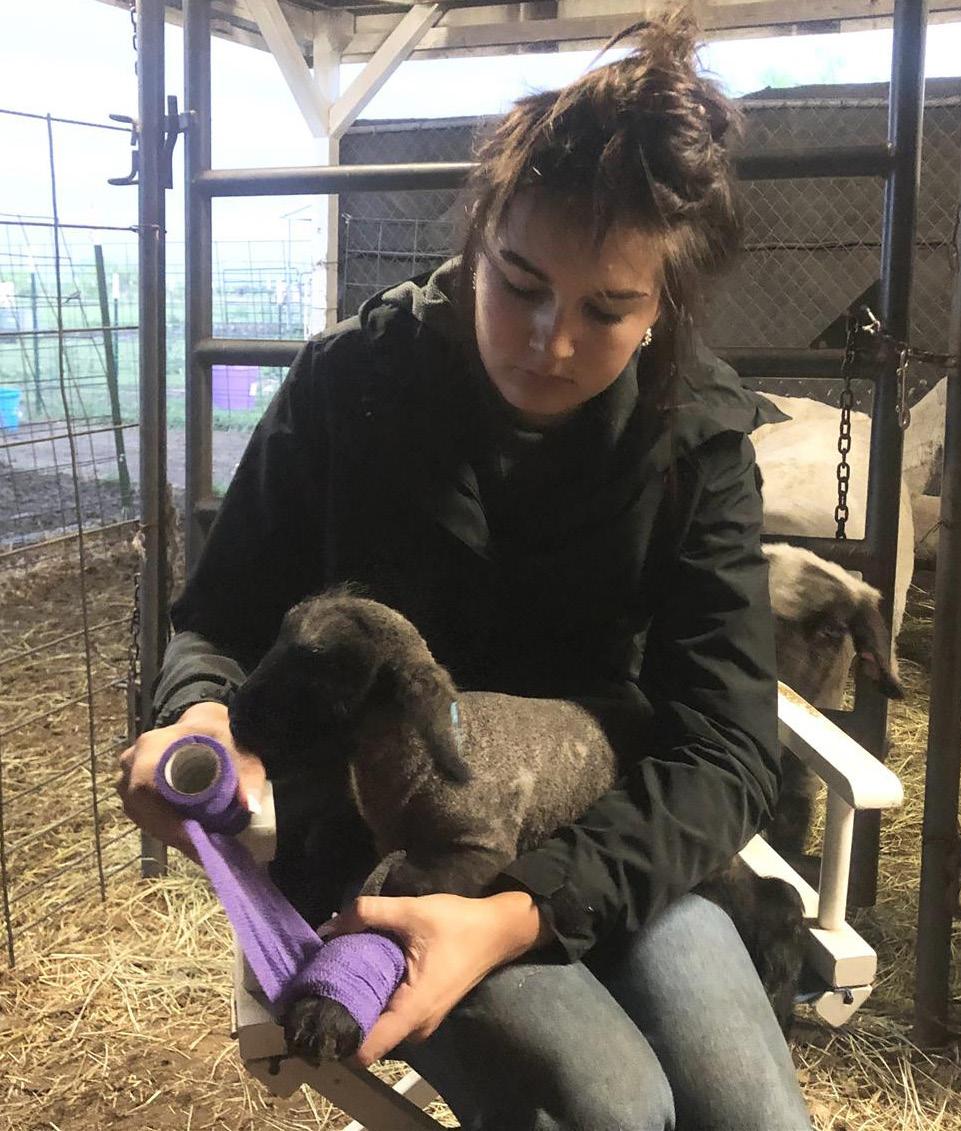
“My future goal is to attend a four-year university and double major in agribusiness and animal science,” said Munchrath. “No matter my line of work, I know I will be involved in production agriculture for a lifetime.”
Munchrath’s successful SAE project was recognized at the 2022 Texas FFA State Convention as a Star Chapter in Production.




• Discuss the significance of agriculture. (What Does Agriculture Mean?)
• How does FFA contribute to agriculture?
• SAE Show and Tell
130.2.(c) (4) (5) Week 2
• Have experienced members discuss their SAE with classes. Have them bring in animals or items that assist in explaining their SAE.
• Explore the various SAE opportunities. 130.2.(c) (2) (4) (5) Week 3 • AET Profile Set-up, AFNR Courses, and Resume 130.2. (c) (1) (2) (4) (5) Week 4 • Review the Various Types of SAEs 130.2. (c) (1) (2) Week 5 • Non-Traditional SAEs 130.2. (c) (1) (2) Week
(c) (1) (5)
(c) (1) (5)
(c) (1) (2)
(c) (1) (2)
(c) (1) (2)
(c) (1) (2)
130.2. (c) (1) (2) (6) (9)
130.2. (c) (1) (2) (6) (9)
130.2. (c) (1) (2) (6) (9)
130.2. (c) (1) (2) (5) (6) (7) (9)
Living a life of service has given me purpose; this purpose has a lot to do with ribbons. For the past 17 years, I have done beach cleanups, served food to the homeless, gutted houses after Hurricane Harvey, collected supplies for the explosion in West and tornadoes in Oklahoma, distributed groceries during the Covid-19 pandemic, and so much more. However, nothing compares to my passion for working with students with special needs.
My passion started at an early age. After watching me play alongside, mentor, and love my peers with special needs at Camp Blessing in Houston, my third-grade teachers partnered me with a student diagnosed with autism in our inclusion classroom. At our local Tomball Elementary Field Day, I partnered with my buddy to do all the events. I didn’t understand it then, but he was very excited to receive ribbons. It didn’t matter that every one of them was for participation or last place.
The summer before my 8th-grade year, my family moved to the little town of Ingram, Texas. I knew no one! I noticed a girl in my physical education class on the first day of school. I naturally gravitated toward her. I began playing games with her and even sat with her at lunch. My new friend Kara was diagnosed with cerebral palsy, drastically affecting her ability to walk and talk.
Kara was interested in becoming involved in showing livestock through our FFA chapter. She would marvel at my belt buckles, banners and ribbon. However, it seemed both financially and, unfortunately, physically improbable. She was often frustrated that she was limited when it came to participating in activities like her peers and siblings.
A couple of years ago, a neighboring county started a "show partners" program. Local livestock breeders would donate animals to students with special needs, and show partners were assigned
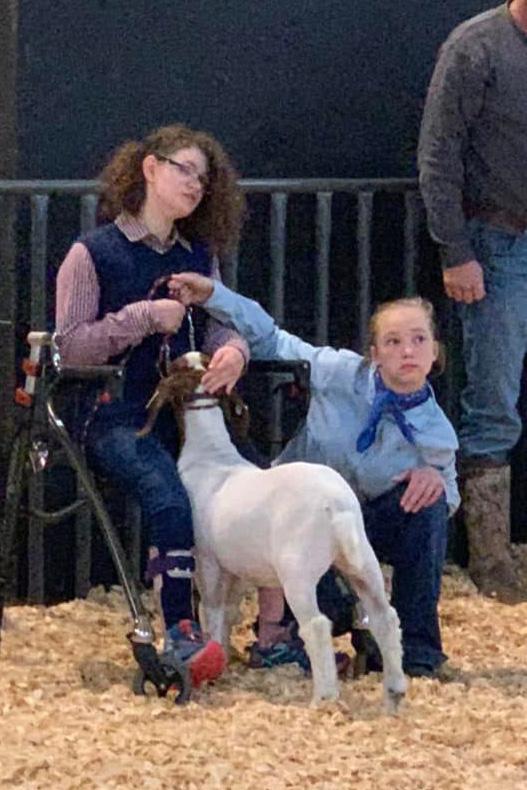
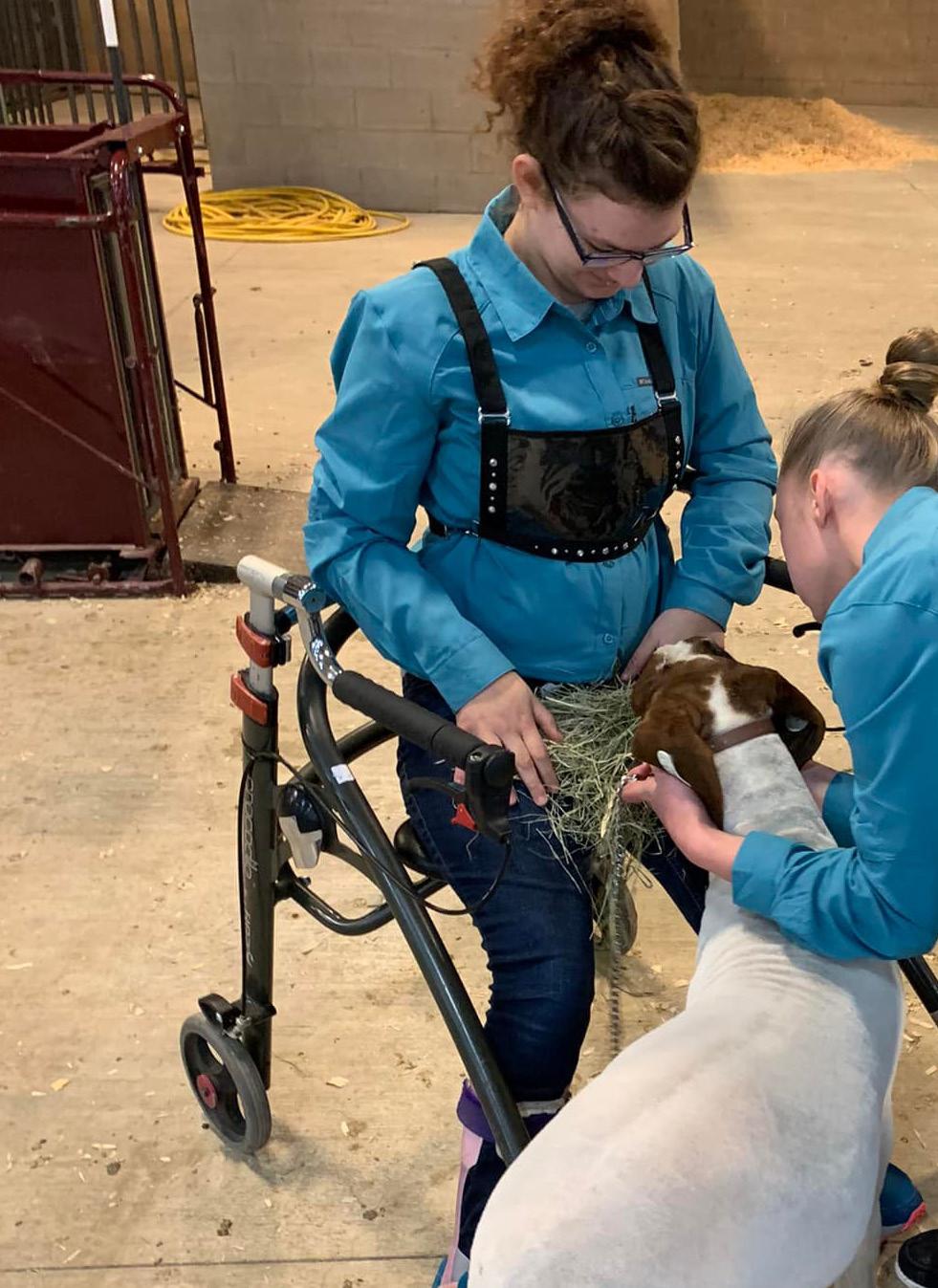
to serve as peer mentors and help with feeding and raising responsibilities. There was no financial responsibility for either student because donations from the community paid for feed and supplies.
This past year, my brother and I partnered with two show partners to raise market goats for the Kerr County Livestock Show. Two students on our campus were identified for this new adventure, one of which was Kara. Of course, Kara was my partner, and another young man named Kevin was my brother's partner.
The goats were housed at the school barn on campus. My brother and I fed the goats in the afternoon and on weekends while our show partners fed them in the mornings during their first-period class. Every Friday, my brother and I miss our first period to work with our partners and their animals. We taught them how to walk, set up, and interact positively with their goats before the big show in January.
After many weeks of practice, we loaded up the goats and headed to a small practice livestock show to work out any final kinks before the big county show. This was a small event, but it allowed us to work to overcome the shaving as a struggle for Ka-
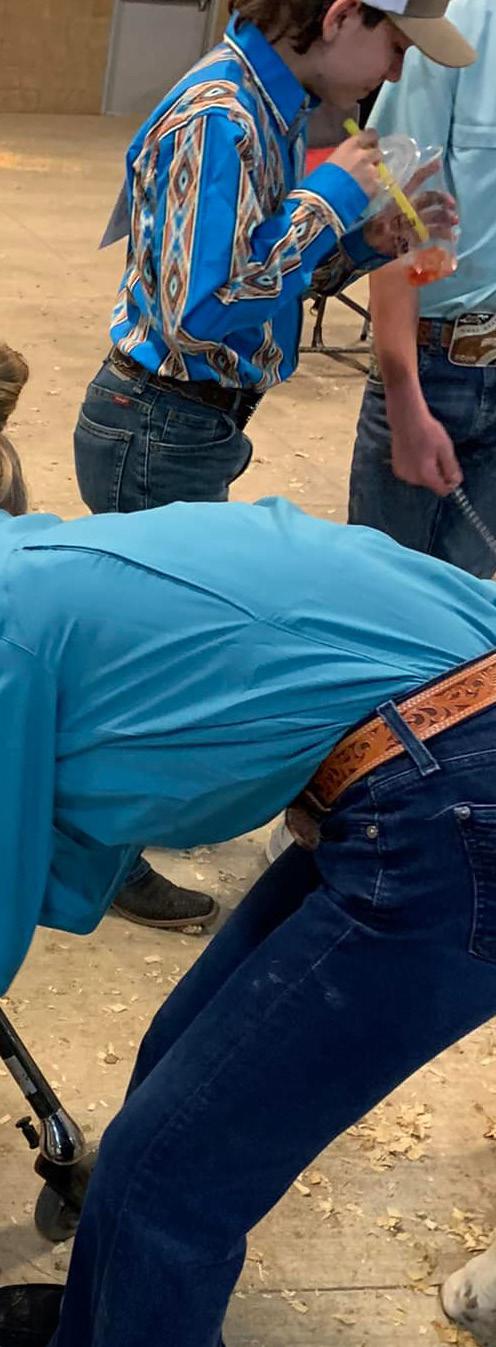
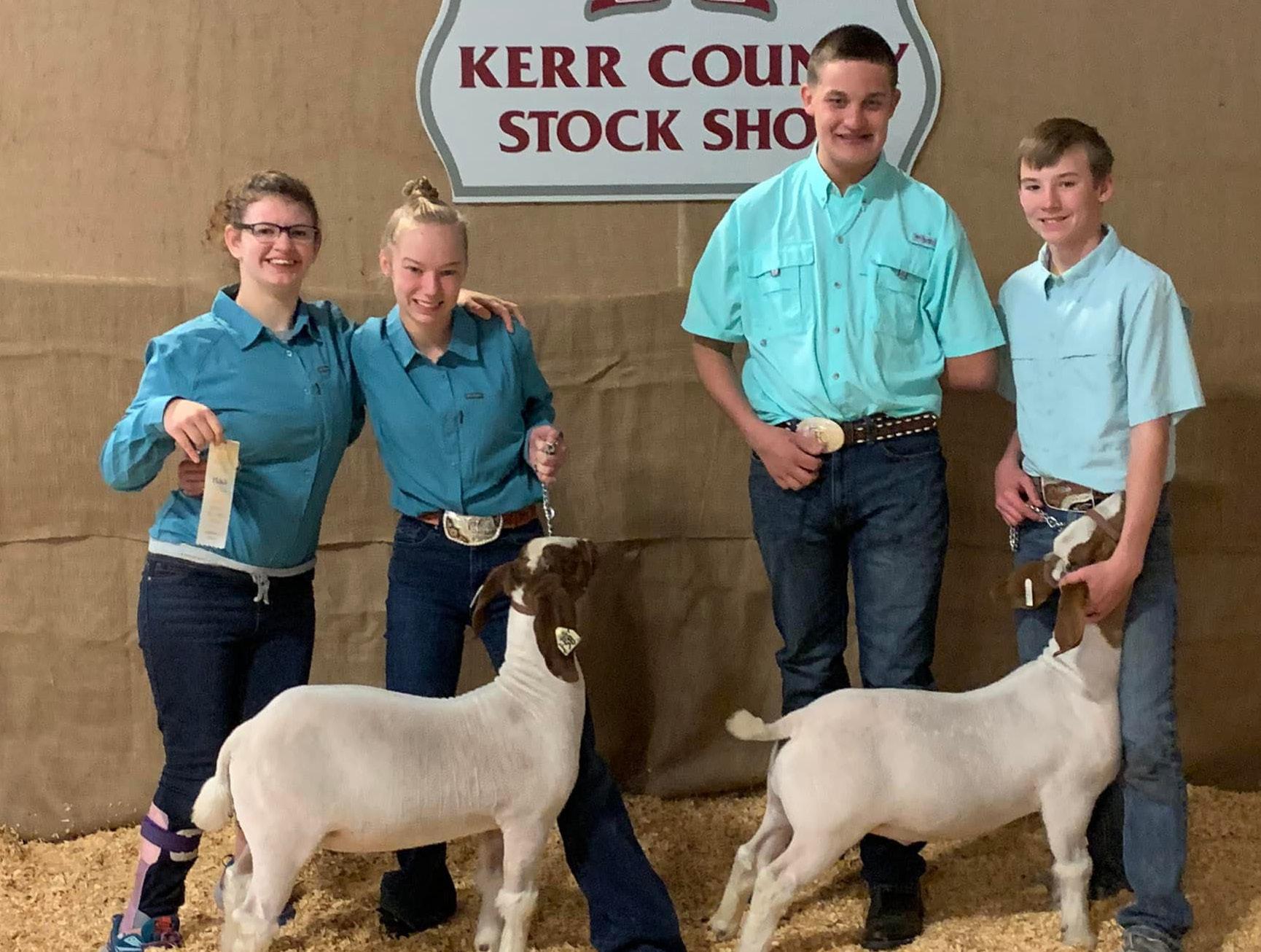
ra’s walker, and it helped us to practice her transition from standing to sitting to brace her goat. The obstacles quickly faded as I immediately saw Kara’s big, beautiful smile when she realized that she was finally showing her very own animal at her first extracurricular competition.

As we exited the show ring, Kara was handed a red ribbon. As she tightly gripped it, she began to cry tears of joy. That day she had a ribbon of her own to hang on her wall proudly.
Again, I was struck with the power of a simple ribbon.
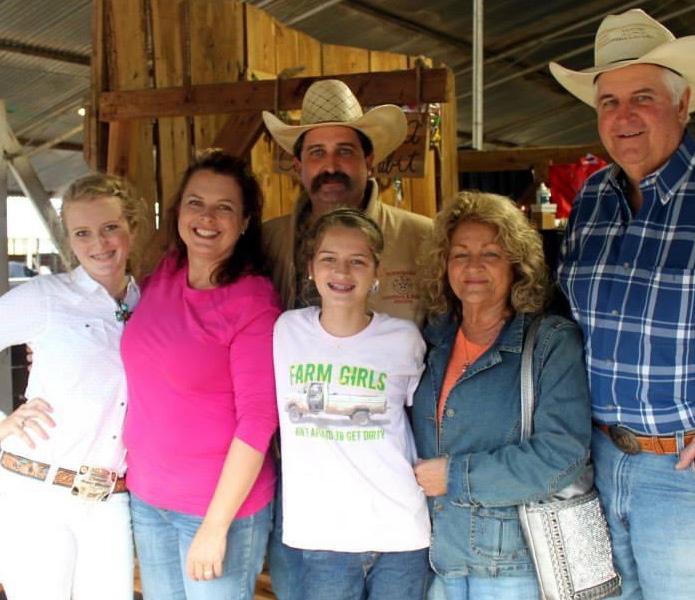
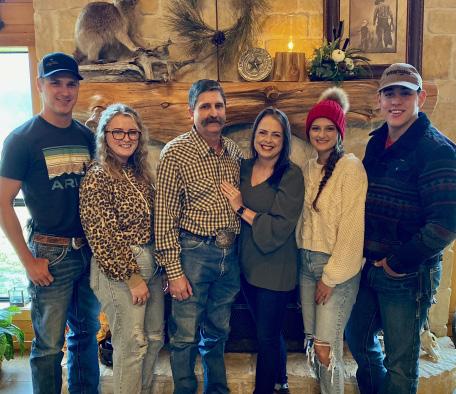
"WATCHING
WHEN DID YOU KNOW YOU WANTED TO WORK IN AG EDUCATION?
"I knew from a pretty young age. I had always dabbled in the idea of following in my parents' and grandpa's footsteps. I explored various paths in agriculture along the way but was led back to ag education." -BRYNN (DAUGHTER)
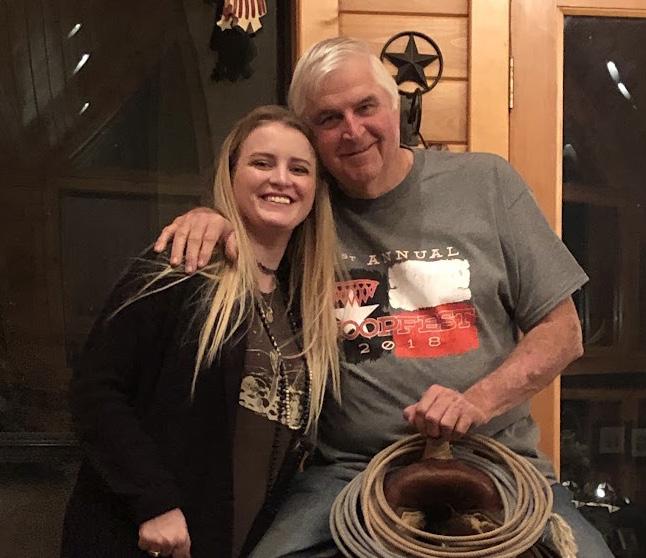
YOUR CHILDREN CHOSE TO FOLLOW IN YOUR FOOTSTEPS AFTER WATCHING YOUR AG EDUCATION CAREER, HOW DOES THAT FEEL?
"Going to livestock show meetings, stock shows, and LDE contests this fall and seeing us all together was comforting. Knowing that the future of agriculture education and the adult leadership of the FFA is in their hands makes me feel outstanding about the future, and I am so lucky to have two ag-teaching daughters!"
-RACHELLE (MOTHER)
HAVE YOU EVER HAD TO COMPETE AGAINST YOUR FAMILY MEMBER? IF SO, IS THERE A BIT OF A FRIENDLY RIVALRY?
"I wouldn't call it a rivalry; it's more of a partnership. With my sister teaching at a different school in our district, we wish them the best in all things, as they do for us. We help each other, even if we are training the same teams. That is what can make both our chapters and students stronger. You can always learn something, even if it is from your little sister!" -BRYNN (DAUGHTER)
"It's ok if my daughters or one of my former students beat me because I taught them how to do it! I'll always do whatever I can to help them succeed. I have no secrets; it just takes dedication and hard work." -RACHELLE (MOTHER)
HER LIGHT UP WHEN SHE IS TEACHING A CONCEPT, COACHING A TEAM, OR JUST WORKING IN THE SHOP IS AN INCREDIBLE FEELING."
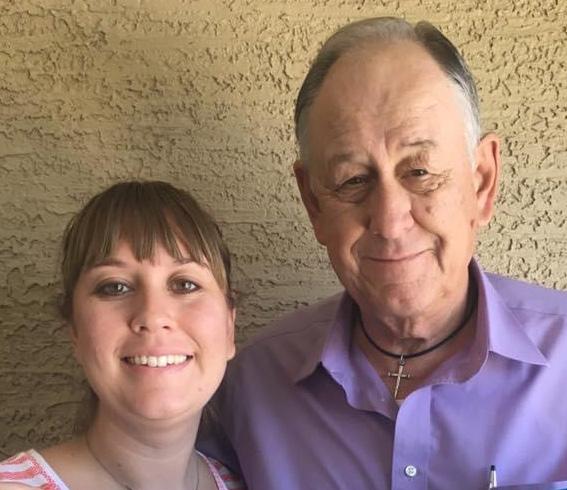
"I believe it was in high school. I saw how my dad shared his love of agriculture with all his students, how he pushed them when training teams and celebrated with them when they made small steps of progress. I wanted to have that same opportunity, to make a small portion of the impact he made."
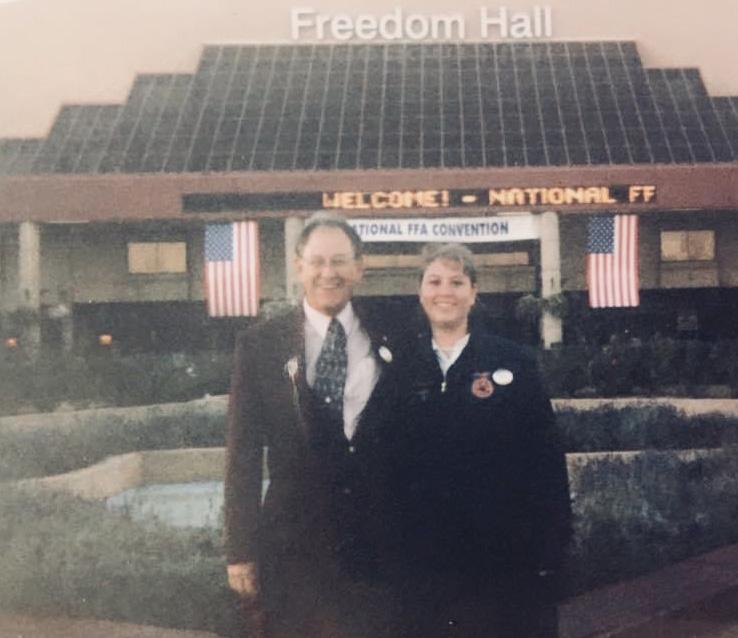

- TARA (DAUGHTER)
YOUR CHILD CHOSE TO FOLLOW IN YOUR FOOTSTEPS AFTER WATCHING YOUR AG EDUCATION CAREER, HOW DOES THAT FEEL?
"I feel very proud that she decided to follow in my footsteps. I have always told her to be yourself, follow your dreams, and do your best."
- KEITH (FATHER)
YOU
AGRICULTURE PLAYS INTO THE FAMILIAL ENVIRONMENT OF FFA AND AG EDUCATION?
"Everyone is like one big family. One who comes together to help each other out, who passes down the traditions and involvement to the next generation, who takes pride in each other's work. That's maybe my favorite thing about being an ag teacher. Seeing those relationships develop and grow."
- TARA (DAUGHTER)
"MY DAD GOT INTO AG TEACHING DUE TO HIS BACKGROUND IN AGRICULTURE AND WANTING TO SHARE THAT PASSION WITH STUDENTS. HE DIRECTLY IMPACTED MY DECISION TO DO THE SAME THING. SO IT'S VERY MUCH A FAMILY PASSION."
“Service is vital to FFA because it is the way of life. The last line of the FFA motto says, ‘Living to serve.’ We are here to serve others; it is our lifelong obligation. Serving others is a beautiful way to find and overcome an issue in the community that we love.”
“I applied to be a ford scholar to help the people in my community. I wanted to help those around me in an impactful and meaningful way.”
“Service is the heart and soul of the FFA. With service we add a layer of love to the work we do. The years we spend in FFA are truly years of service like no other.”
“Service is a crucial part of the FFA, as it says in the last line of the FFA motto, “Living to Serve.” As FFA members, service is essential so that we leave a positive difference in our communities. As leaders, it is important to remember we are not leading for ourselves; we are leading to serve and better our organization.”
“In my opinion, servant leadership is a foundational value for FFA members. Our commitment to feeding, clothing, and sheltering a growing population is seen through our proven work ethic and ability to help each other. Just as EM Tiffany wrote in the FFA Creed, it is our privilege to exert an influence in our home and community through less begging, strong leadership, and respect.”
"While FFA teaches us about the agriculture industry and develops leadership qualities needed for future careers, it also teaches us that service is America's backbone. It's up to us to step outside of our chapters and implement it into our daily lives. FFA members work to contribute to society while strengthening the community."

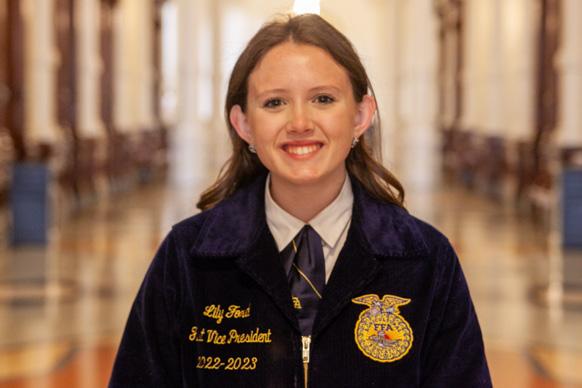

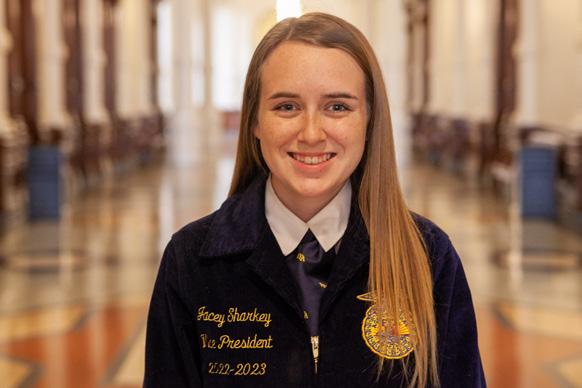

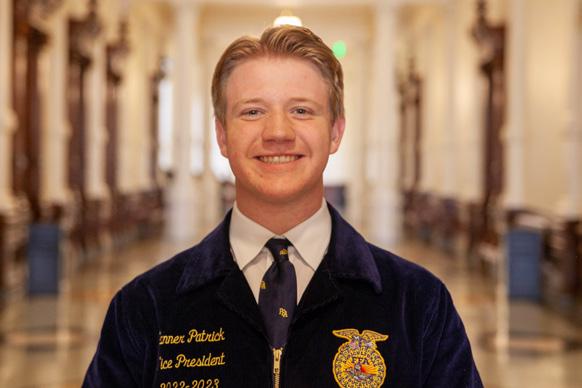
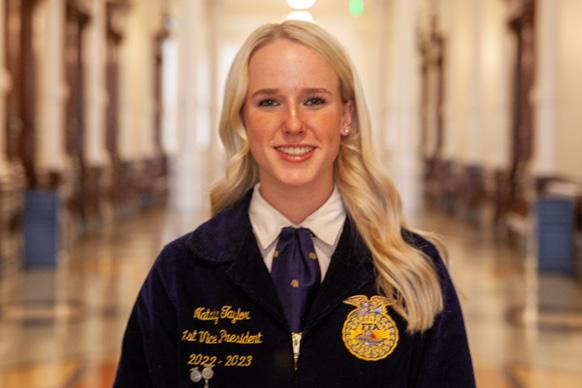
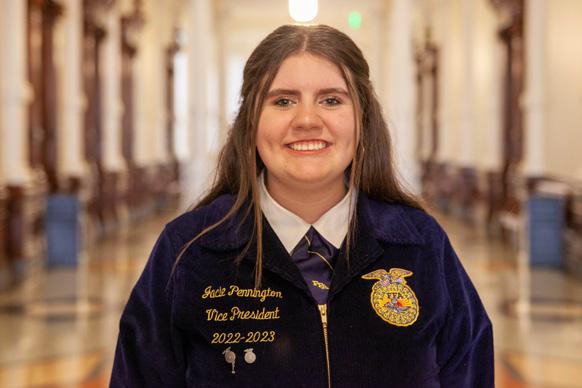
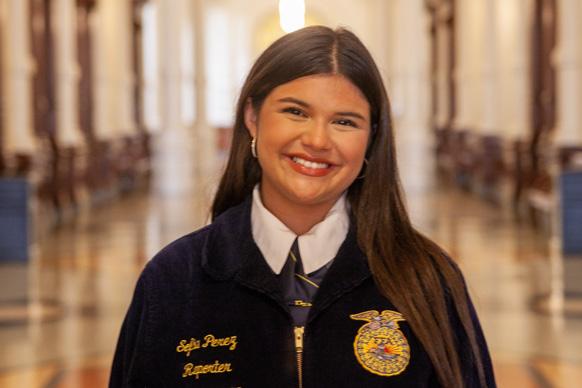
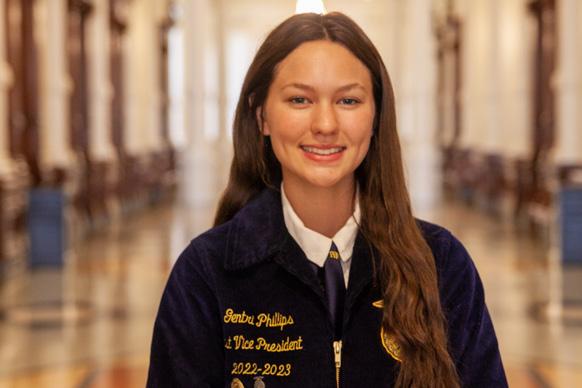
“Service is vital to FFA because it is important to give back to others, especially in our communities. After all, they invest in you.”
“Service is vital to the FFA because it allows members to be aware of other people's needs. Recognizing these needs grants people the opportunity to assist others rather than just helping themselves. Although sometimes you don't see the immediate result of your actions, it still leaves you with a desire to help more people.”
“While applying to be a Ford Leaders hip Scholar, I aspired to learn more about leadership and service. I hoped to push myself as a leader and better understand how to plan and execute successful and beneficial community service projects.”
“I applied to be a Ford Leadership Scholar because of the program's incredible emphasis on creating a substantial and sustainable capstone community service project that truly addresses a need in one's community. I hope to further develop the tools in my toolbox to significantly impact my community.”
Carmen Kuiper's family heritage in the dairy industry led her to a successful Supervised Agricultural Experience (SAE).
"My parents both grew up on a dairy in The Netherlands and dairying has been in our family for as long as we can remember," said Kuiper.
The Hico FFA member began as an apprentice and was tasked with handling ear tags and observing. As the years progressed, so did her responsibility. She is now in charge of ear tags and electronic identification (EID) for approximately 4,000 head at two dairy operations.

"I spend my Saturdays working at both dairies," said Kuiper. "The records that are kept and collected from the EIDs are essential because we depend on the records to handle the cows and animal management decisions."
Technology plays a signifi-
cant role in the dairy's everyday function, as well as the quarterly and yearly reports and analyses.
"The EID helps keep accurate milk records, health records, detect mastics, identify which cows to cull, and helps employees sort cows out electronically," said Kuiper.
The high school senior plans to attend Oklahoma State University to earn a degree in Animal Science with a concentration in production and a minor in ag economics. During that time, she hopes to intern for a feed company or take advantage of other opportunities to learn more about cattle production.

"After that, I hope to develop my own heifer replacement raising operation and raise calves."
Kuiper's successful SAE project was recognized as the Star Lone Star in Placement at the 2022 Texas FFA State Convention.
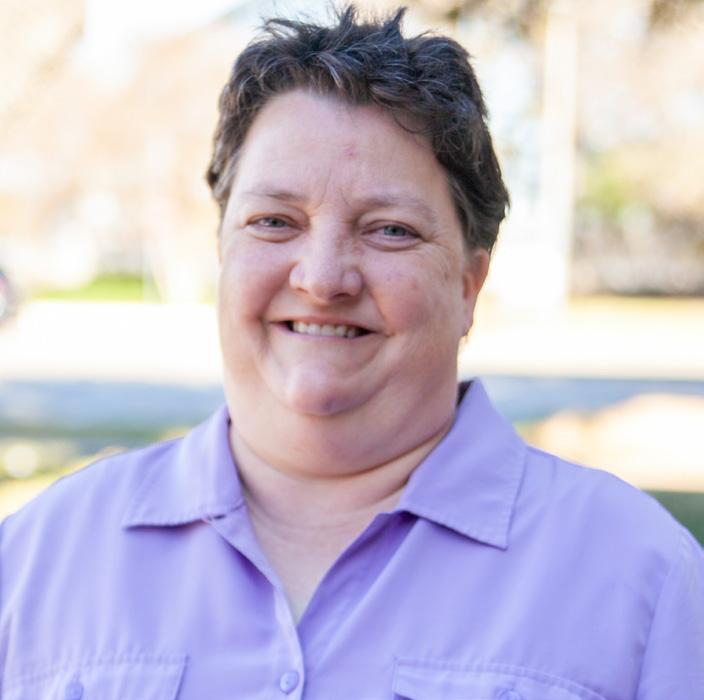
One of my favorite pictures on my bedroom wall is a depiction of the account found in John, Chapter 13. It shows Jesus kneeling, washing the feet of a dear friend. It is a picture and a story I reflect on often, especially when pondering the topic of serving one another. No matter your religious affiliation or persuasion, this account has valuable lessons that apply to our daily opportunities, especially as ag teachers.
The story's setting happens mere hours before Jesus is arrested and crucified. The first verse clearly states that Jesus knew he would soon depart from this world. Knowing he had only a few precious hours left to be with those disciples who had walked faithfully by his side, why would he prioritize washing feet? The second part of the same verse offers an answer – because he loved them.
I am officially to the point of the school year where I show up to work every morning, knowing that I cannot accomplish everything I would like in that school day. Having less wisdom than the protagonist in our Jerusalem story, I sometimes get to the end of the day with some task checkmarks but wonder if my students left my room feeling valued. Each of our students is a precious and unique individual; sadly, many face heart-wrenching challenges at home. Taking that moment to personally greet each of them, ask a quick question about something that matters in their world, and give them a compliment when they do so-
mething good – those small actions will help them know we are in their corner. About seven years ago, I came home one Friday with one of my students on my mind. He was a quiet young man sitting at the back of the room, minding his business. I resolved that Monday, I would make a point to have a conversation with this young man that often got "missed" is the busyness of the ag building. Unfortunately, I never got that chance as the young man was in an accident that very weekend. Most of the time, thankfully, we get those second, third, fourth, and fifth chances.
At the end of the day, our calling is to touch lives, and I can only do that if I am an ag teacher who "loves them unto the end."
Verse four says that Jesus laid aside his own garment and girded himself with a towel. This one, I think ag teachers do very well. Sometimes we could use a Saturday on our own ranch, but instead, we haul students to find show projects. Putting aside one's own interests and donning what is needful for someone else is the definition of service. I have been the beneficiary of much ag teacher service. From Mr. Bailey, who saw potential in a pint-sized greenhand, to my teaching partner, Mr. Foster, who rearranged his schedule to drive my wildlife team and me to an event last week. Ag teachers, thank you for all the times to lay aside your own pursuits and gird that towel to give to others.
As Christ approaches Simon Peter, we gain two more valuable lessons on service. At first, Peter protests. He doesn't feel that his teacher, whom he respects, should be doing this for him. I understand what Peter is feeling. It is hard for me to receive service, even when I really need it. Could Peter have washed his own feet? Yes, I am sure he was capable. Yet, accepting this sincere act allowed them to "have part one with another." In this story and many service situations, humility is required from the giver and receiver. Sometimes we must remember that it is our turn to receive and that we will be blessed by it. Appreciation, trust, and goodwill develop as we meekly and gratefully receive service.
As Peter understands this, he embraces it so thoroughly that he asks Jesus to wash his hands and head, and Jesus responds this is not necessary at the moment. This brings me to one more observation. While any service sincerely given and received is good, the best help is the help that is needed at the moment. I know I had sometimes offered advice when the other person just needed someone to listen, or I have left a note when a visit might have
been better.
A friend told me a story about having a thought to take ice cream to a specific individual. When she arrived, the single mother was in the middle of trying to get the toddlers bathed and in bed. Without hesitation, my friend went to work. An hour later, the kids were resting peacefully, and melted ice cream was being cleaned off the countertop. Both ladies were smiling, knowing that the most useful aid was accomplished. None of us serves perfectly, but we can always strive to be perceptive in understanding what is truly needed.
Ag teaching provides us multiple daily opportunities to give, receive, witness, and embrace the beautiful act of people sacrificing for the benefit of another. I believe this is part of the reason ag teachers are a great bunch of people. We are told in verse 17 that knowing and doing these things brings happiness. This may be why the FFA creed, the FFA motto, and the life of Jesus all end with an emphasis on service. I wish you boundless happiness as we work to exemplify it, receive it, and teach it to our students.

 – MARTIN LUTHER KING, JR.
– MARTIN LUTHER KING, JR.
Ithink it would be easy for our teachers to answer this question. Daily we are serving our students and our community. We, as agricultural educators, must go out of our way to make every student feel wanted and needed. Making a young person feel comfortable and valued is a vital task to do every day. Our service to our students and communities should never be questioned if we continually give them opportunities to grow and serve themselves and others.
As stated by Aaron Sorkin, "Don't ever forget that you're a citizen of this world, and there are things you can do to lift the human spirit – things that are easy, things that are free, things that you can do every day: Civility, respect, kindness, character."
Treat your students with respect and civility, and they will reciprocate to you and others. Showing kindness will tell students you are here for them and want to help them develop. Modeling character traits like these are simple and needed to be that person of influence you are each day. Knowing that they are watching as you serve in the school and community. Students love to see you supporting the other activities they are involved in around campus. Parents will notice too, and support your efforts to serve as a role model for their children.
Doing service in your community should be a standard of your practice as an advisor with your FFA chapter. I believe that every community has needs, and your students could help serve those needs. We see so many great examples of service by students across this state. As stated by Mahatma Gandhi, "The best way to find yourself is to lose yourself in the service of others."
It could be how students find their purpose in life or even their career pathway. Create those opportunities for students to allow them to see what is happening in the community and let them find ways to serve. It may provide them with a bit of happiness in their lives. As stated by Dieter F. Uchtdorf, "As we lose ourselves in the service of others, we discover our own lives and our own happiness."
Great joy can be found by a student when they are serving others. When you take them to a community service project, do not stand back and watch them as they work; jump in and show them you believe in what they are doing. Why stand back and watch when you can help? Don't make community service about getting hours in the record book for advanced degrees; make it about who it is helping and making a difference in someone's life and your community.
Living to serve should be one of the most important lines in the FFA motto. As said by Anne Frank, "How wonderful it is that nobody needs to wait a single moment before starting to improve the world."
"LIFE'S MOST PERSISTENT AND URGENT QUESTION IS: WHAT ARE YOU DOING FOR OTHERS?"


The dictionary has two definitions for the word service: 1) the action of helping or doing work for someone, 2) a system of supplying a public need such as transport, communications, or utilities such as electricity and water.
Service looks a little different to everyone. Some of us might feel the burden of fear that we are not doing enough to serve others. I would bet that the individuals who read this magazine shouldn't have that burden, but our profession is full of those who truly live to serve and will likely always wonder if there's something more they might do for others.
Service to some might look like caring for an ailing relative; it may not feel like giving back but ensuring someone's quality of life is likely the noblest of causes. Service might also look like keeping snacks or supplies in your classroom for students whose home life isn't as fortunate as others. It might look like adding money to lunch accounts so no student has to go without a meal. It might even look like spending extra time at the barn with an animal that will never win a buckle or a banner because you know the experience is valuable for that student. Service might look like taking on a class for a special population at your school because there's a need, and though you may not have the extra planning time, you're rewarded by the excitement and engagement you get to provide to those students.
If you've heard Dan Hunter speak, you've probably heard the quote, "Do all you can, while you can, and do all you can for those who can't."
I got chills the first time I heard him share this quote and share the anecdotes that led to these wise words. There's a lot of responsibility in the phrase, but it is a moral responsibility to hold ourselves accountable to that level of selfless service.
In addition, those quoted words always prompt me to consider the line from The FFA Creed, "In less need for charity and more of it when needed."

I am surrounded by individuals who constantly answer the call of need from those around us. The acts of service listed in the previous paragraphs are all examples of service by ag teachers and individuals I am blessed to call friends.
This article aims to encourage you and the members of Texas FFA to continue doing great work and serving in the ways you do. Doing so may have a lot of benefits for you. When you serve others, you of-
“OUR PROFESSION IS FULL OF THOSE WHO TRULY LIVE TO SERVE AND WILL LIKELY ALWAYS WONDER IF THERE'S SOMETHING MORE THEY MIGHT DO FOR OTHERS.”
youth organization, we are responsible for instilling the value of service in our students. Service is, or should be, a large part of every FFA career. Every chapter POA has an element of service; most chapters require a minimum number of volunteer hours, and students can even have a service learning SAE! Call me an eternal optimist, but I like the idea that, by being involved in FFA, students might gain a greater appreciation for service and, in turn, make the world a better place!
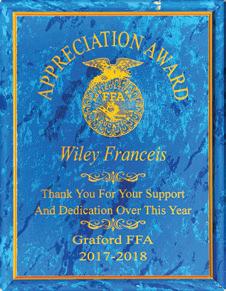
ten use SUPERIOR TROPHIES & BUCKLES | HOUSTON, TX
brain;









you're


your Your one-stop shop for custom trophies, buckles, and apparel.
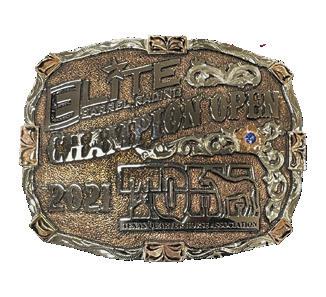



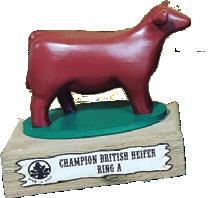
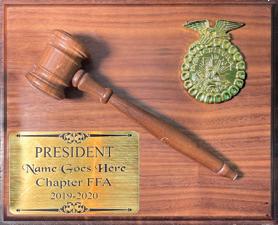
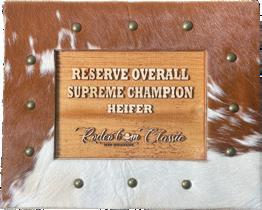
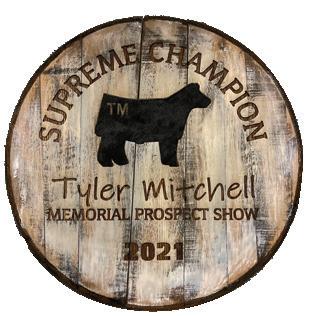


Communities can have strengths – qualities or characteristics people view as a competitive advantage compared to other groups. Educational excellence, services, and other developmental assets can set a community apart. Texas agricultural science education and the FFA are recognized and set apart as a result of our leadership development efforts.
A school superintendent asked his agricultural science teacher about a student participating in FFA. Schools have students who are “athletes,” “musicians,” and “actors.” What is one word that describes “what is a student that participates in the FFA?”
The leadership of the Texas FFA Foundation sought input from stakeholders about what word best describes a FFA member. An expansive email to more than 3,200 stakeholders, teachers, sponsors, and members was sent to gain their insight.
When asked for one word that you believe best describes an FFA member, there were more than 85 answers from the over 100+ responses received. When asked to describe “what is an FFA member,” the five top responses were:
Leaders
Passionate Resilient
AGvocate Innovator
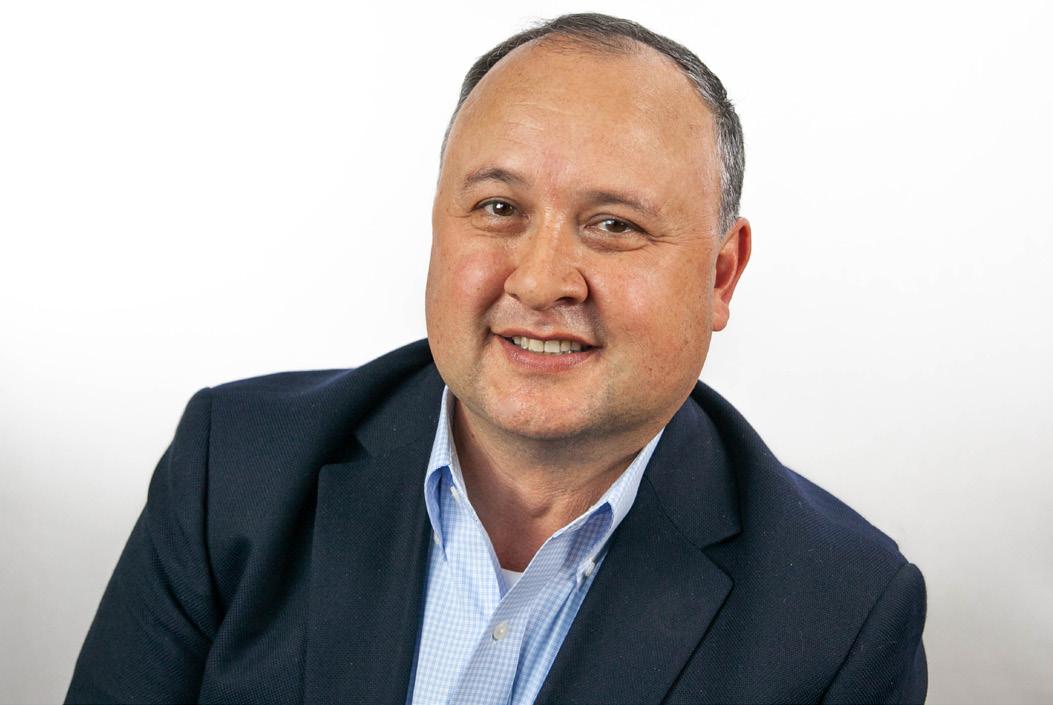
As part of community engagement, networking is an essential skill, regardless of your level of experience or the community in which you are engaged. Positive networking can create trust and support –and can mean the difference when trying to solve a problem, capitalize on an idea, or position oneself for improved job prospects.
The right contacts in your professional network maximize your career potential and surround yourself with prospective mentors and your own personal “board of directors.”
You are in business, everyone reading this article - the business is YOU. Create your own personal board of directors. A board of directors is a group of advisors that jointly supervises the activities of an organization. Boards of directors are used in for-profit or nonprofit organizations. They share their professional insights and expertise to help the organization excel, grow, and establish brand excellence.
Community and professional networking take work, and it doesn’t just happen and doesn’t come naturally for some people. In fact, for some, the thought of starting a conversation with a stranger at an event or activity can create anxiety and fear.
Remember, you know your business – it is you. You are the subject matter expert. Have a few key thoughts, examples, or
“I ALONE CANNOT CHANGE THE WORLD, BUT I CAN CAST A STONE ACROSS THE WATERS TO CREATE MANY RIPPLES.” – MOTHER TERESA
testimonies you would like to share about your business or organization. The idea is to get the conversation flowing and leave room for future discussions. Here are ten tips on building community, a strong network, or your personal board of directors.
Networking is about sharing, not taking, forming trust, and helping one another toward goals.
Exchanging information on challenges, experiences and opportunities is a key benefit of community because it allows you to gain new insights.
Participating, being involved, visible, and getting noticed is an asset when building a career. Build your reputation as a knowledgeable, reliable, and supportive member of your profession by offering useful information or tips to colleagues.
Expanding your contacts can open doors to new opportunities for personal growth, new knowledge, or job opportunity. Building networks help keep you top of mind when opportunities such as job openings arise and increases your likelihood of receiving introductions to potentially relevant people or even a referral.
Community provides insights into techniques from peers and the latest trends. A wide network of informed, interconnected contacts means broader access to new and valuable information.
Community and networks allow insights from experienced peers and discussing common challenges and opportunities opens the door to valuable suggestions and guidance. Authentic and genuine assistance to your network also sets a strong foundation for receiving support in return when you need it.
By stepping outside your comfort zone and building social skills, you’re gaining self-confidence that you can take anywhere.
Positive networks and community can keep you out of a rut. Asking for opinions from people you trust or admire can help you see things in a new light and overcome roadblocks that you may not have seen otherwise.
Networking develops professional relationships, but some of the strongest and most long-standing friendships are born from work connections. Your community is probably made up of like-minded people with similar goals, which can spill over into your personal friendships.
Professional networking opens many doors in the form of career advice, lasting relationships, and even landing your dream role. You never know who might be hiring for your ideal job or know someone who is, and the more people you have in your network, the likelier you are to be the first to know when those big job opportunities pop up.
The most successful people I know … know lots of people. In a matter of phone calls, texts, or emails, we can connect to solutions, brainstorm an opportunity, or connect someone to a possible job. Additionally, we are fortunate to be part of a 94-yr old community known as the Texas FFA. Get to know those who went before you, those around you, and those who will follow in your footsteps, then enjoy your community and the success it brings.
“GET TO KNOW THOSE WHO WENT BEFORE YOU, THOSE AROUND YOU, AND THOSE WHO WILL FOLLOW IN YOUR FOOTSTEPS, THEN ENJOY YOUR COMMUNITY AND THE SUCCESS IT BRINGS."
How often have you heard someone complain, "I'm not your servant!"? Or perhaps you may have heard these words come out of your significant other's mouth. What was your first reaction to this statement? Were you offended? Did you stop what you were doing to help?
Webster's Dictionary defines service as "to furnish or supply with something needed or desired." Having a servant's heart means putting others' needs ahead of our own and serving with the right motivation.
Dr. James Dobson from Focus on the Family writes, "Having a servant's heart can take many forms. Stopping your friends from arguing with one another, saying a kind word to someone who is feeling down, or fulfilling a basic need for someone in a tough situation are all examples of how to live with a servant's heart."
If you are wondering how to respond to a specific situation, remember the Golden Rule of Luke 6:31, "As you wish that others would do to you, do so to them." Consider what you wish others would do if you were in that situation, and act accordingly.
How far are you willing to go to serve your fellow man?
I received a reminder on September 29th of the deadline for submitting this article for this issue discussing the topic of "service."
This word and date weighed pretty heavy on my heart, and I am reminded of this daily by a blue plastic wristband I wear, similar to the ones we wear at state convention. The words on the band read "In Memory of Mi-
 - TIM FARGO
- TIM FARGO
cheal Eakin" on one side, and on the other is "EOW 9-29-98."
Deputy Constable Michael Eakin was shot and killed after making a traffic stop in the 13000 block of Hardy Toll Road, near Aldine Mail Route Road in Houston, Texas. As he checked the vehicle's license plates, the passenger exited and fled on foot. Deputy Constable Eakin pursued him, and a scuffle ensued, at which time he was shot in the neck. Other responding deputies arrested several other people who were in the vehicle at the time. The 17-year-old suspect was sentenced to death on May 25th, 1999. The killer's sentence was commuted to life in prison in March 2005 when the United States Supreme Court ruled that the execution of criminals who committed their crimes as a juvenile was unconstitutional.
The term "service" took on a different meaning for me as I wrote this article. It allowed me the opportunity to share this story. A story that I share with my students. A tale of a young man with a servant's heart. A story of a young man that wore the blue corduroy of official dress before he wore the uniform of a law enforcement officer. The front of his FFA jacket read "Micheal Eakin / State Vice-President / 1992-1993."
I am proud to have claimed him as a student, a fellow past state officer, and a friend.
"There is no greater love than to lay down one's life for one's friends," John 15:13 NLT
Thank you to those who put their lives on the line for us to enjoy the freedoms we sometimes take for granted!
